1933 Willys Coupe, a name that evokes images of classic American automobiles and a bygone era of style and innovation. This sleek coupe, produced by the Willys-Overland Motor Company, was a symbol of the burgeoning American automotive industry in the 1930s.
Its distinctive design, featuring a streamlined body, a distinctive grille, and art deco influences, captivated the public’s imagination and solidified its place in automotive history.
The 1933 Willys Coupe was not merely a stylish vehicle; it was a testament to the engineering prowess of the time. Its four-cylinder engine, while modest in horsepower compared to later models, provided reliable transportation and a smooth driving experience.
The car’s affordability and practicality made it a popular choice for families and individuals seeking a stylish and efficient mode of transportation.
History and Significance
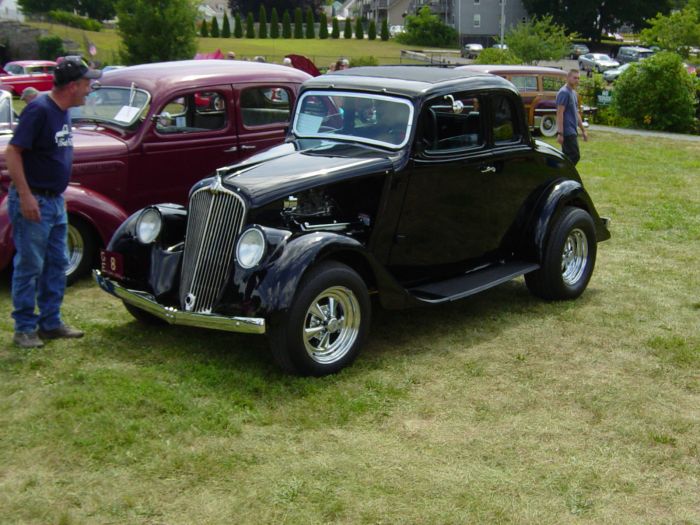
The 1933 Willys Coupe stands as a testament to innovation and resilience in the face of economic hardship. This stylish and affordable automobile, produced during the depths of the Great Depression, played a significant role in the American automotive industry and became a symbol of hope for a nation struggling to recover.
Willys-Overland Motor Company and its Impact on the 1930s
The Willys-Overland Motor Company, founded in 1908, had already established itself as a prominent player in the automotive market before the Great Depression. Known for its rugged and reliable vehicles, Willys-Overland catered to a wide range of customers, from farmers and ranchers to urban commuters.
However, the economic downturn of the 1930s presented a major challenge to the company’s survival.Facing plummeting sales and a shrinking market, Willys-Overland adopted a strategic approach to weather the storm. They focused on producing affordable and efficient vehicles that appealed to the financially constrained public.
The 1933 Willys Coupe was a prime example of this strategy.
Design and Styling: 1933 Willys Coupe
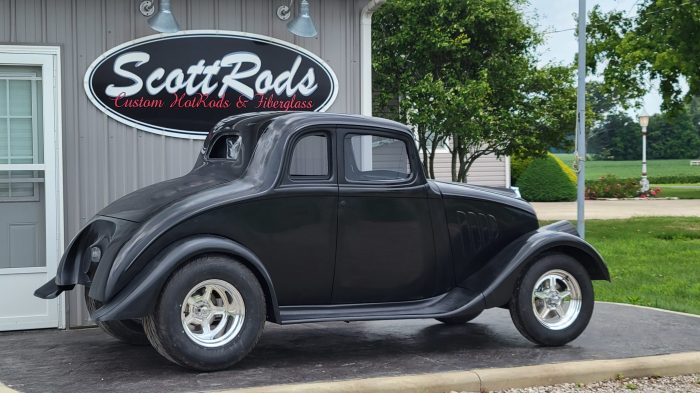
The 1933 Willys Coupe, despite being a budget-friendly vehicle, exhibited a distinct design that reflected the stylistic trends of the era. Its sleek lines and Art Deco influences contributed to its timeless appeal.
The 1933 Willys Coupe is a true head-turner, with its sleek lines and distinctive grille. It’s a prime example of the artistry and engineering that went into the golden age of classic cars. The Willys Coupe, with its timeless design and historical significance, remains a sought-after piece for collectors and enthusiasts alike.
Exterior Design
The 1933 Willys Coupe featured a distinctive body style that was both practical and stylish. The coupe’s streamlined body was characterized by its rounded fenders, sloping hood, and integrated headlights. This design not only enhanced the car’s aerodynamic efficiency but also gave it a modern and sophisticated appearance.
The 1933 Willys Coupe was a cool little car, but if you’re looking for some serious muscle, check out the 1967 Dodge Polara: A Classic Muscle Car. It’s a whole different beast, with power and style that the Willys Coupe could only dream of.
But for those who appreciate the charm of a bygone era, the Willys Coupe still holds its own, a testament to simple, elegant design.
The coupe’s grille was a prominent feature, typically consisting of a series of vertical bars that extended from the hood to the bumper. The headlights were integrated into the fenders, adding to the car’s streamlined profile. The Willys Coupe was available in a variety of colors, including black, blue, green, and red, further enhancing its visual appeal.
Interior Design
The interior of the 1933 Willys Coupe was designed with simplicity and functionality in mind. The dashboard was straightforward, featuring basic gauges and controls. The seats were upholstered in durable fabric, and while not luxurious, they provided comfortable seating for the driver and passenger.
The overall passenger experience was characterized by a sense of practicality and affordability, reflecting the car’s intended market.
Color Options and Trim Levels
The 1933 Willys Coupe was available in a variety of color options and trim levels. Here’s a table summarizing the available choices:
| Color | Trim Level | Features |
|---|---|---|
| Black | Standard | Basic interior and exterior features |
| Blue | Standard | Basic interior and exterior features |
| Green | Standard | Basic interior and exterior features |
| Red | Standard | Basic interior and exterior features |
| Black | Deluxe | Upgraded interior and exterior features, including chrome accents and a more comfortable interior |
| Blue | Deluxe | Upgraded interior and exterior features, including chrome accents and a more comfortable interior |
| Green | Deluxe | Upgraded interior and exterior features, including chrome accents and a more comfortable interior |
| Red | Deluxe | Upgraded interior and exterior features, including chrome accents and a more comfortable interior |
Performance and Specifications
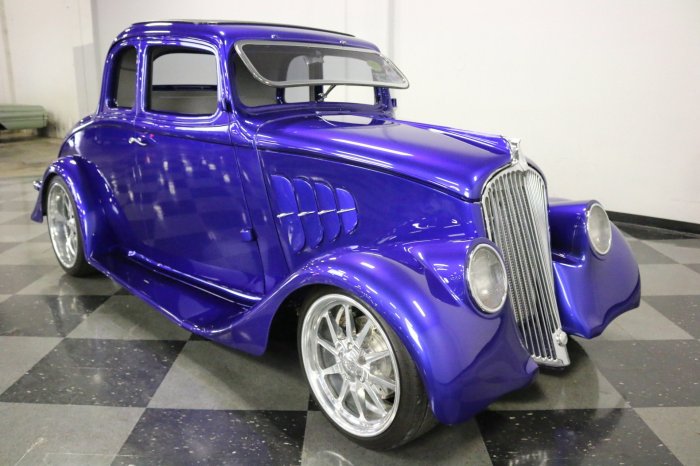
The 1933 Willys Coupe, while known for its affordability and practicality, was not a powerhouse on the road. Its performance, though adequate for the time, was modest compared to some of its contemporaries.
Engine Specifications
The 1933 Willys Coupe was powered by a 1.9-liter four-cylinder engine, known as the “Willys Four.” This engine produced a modest 25 horsepower, which was typical for cars of its era. The engine was coupled with a three-speed manual transmission, sending power to the rear wheels.
Performance Capabilities
The 1933 Willys Coupe was capable of a top speed of around 60 mph, which was respectable for its time. Acceleration was leisurely, taking a considerable amount of time to reach highway speeds. Fuel economy was also modest, with an estimated 20 miles per gallon.
Performance Compared to Other Cars of its Era
The 1933 Willys Coupe’s performance was generally in line with other affordable cars of its era. For example, the Ford Model A, a popular competitor, also had a four-cylinder engine with a similar horsepower output. However, some higher-end cars of the time, such as the Chevrolet Master or the Chrysler Imperial, offered significantly more power and performance.
Cultural Impact and Legacy
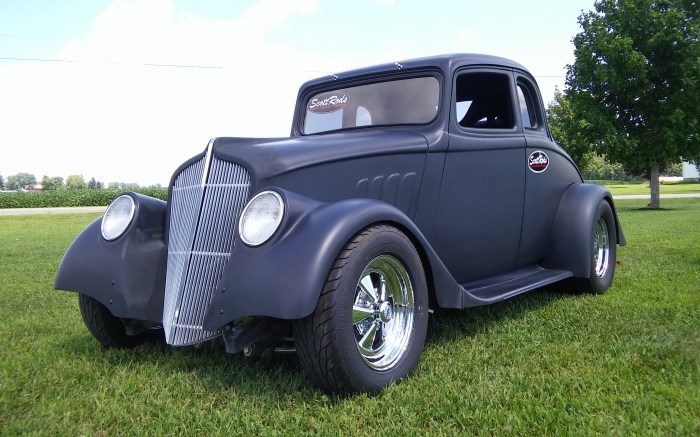
The 1933 Willys Coupe, despite its relatively short production run, left a lasting impact on automotive design and popular culture. Its unique styling, affordability, and performance characteristics contributed to its enduring appeal, making it a beloved classic car today.
Cultural Impact
The 1933 Willys Coupe’s sleek and modern design resonated with the public, reflecting the changing tastes of the era. Its affordability made it accessible to a wider audience, further solidifying its place in popular culture. The Willys Coupe’s influence can be seen in various forms of media, including movies, television shows, and music.
For example, the car was featured in the 1980s film “The Blues Brothers,” where it was driven by the iconic character, Jake Blues. The car’s distinctive appearance and sound contributed to the film’s overall aesthetic, adding to its popularity and cultural significance.
Notable Individuals and Events
While not as widely known as other classic cars, the 1933 Willys Coupe has been associated with some notable individuals and events. For example, the car was driven by the famous race car driver, Barney Oldfield, who helped to popularize the model among enthusiasts.
The 1933 Willys Coupe, a compact and stylish car for its time, represented a shift in automotive design. While it may not have the luxurious presence of a 1948 Lincoln Continental: A Post-War Icon , its practicality and affordability made it a popular choice for everyday drivers.
The Willys Coupe, with its streamlined body and innovative features, became a symbol of the evolving American automotive landscape, a testament to the ingenuity and resourcefulness of the era.
Legacy
The 1933 Willys Coupe’s legacy extends beyond its cultural impact. Its design principles, particularly its streamlined body and innovative features, influenced later automotive models. The car’s influence can be seen in the design of other vehicles, such as the 1934 Ford Coupe and the 1935 Chevrolet Coupe.
These models incorporated elements of the Willys Coupe’s design, such as its sloping hood, rounded fenders, and integrated headlights, creating a more modern and aerodynamic aesthetic. The 1933 Willys Coupe also played a role in the development of the Jeep, which was originally designed by Willys-Overland Motors during World War II.
The Jeep’s rugged design and off-road capabilities were influenced by the Willys Coupe’s sturdy construction and compact size.
Restoration and Preservation
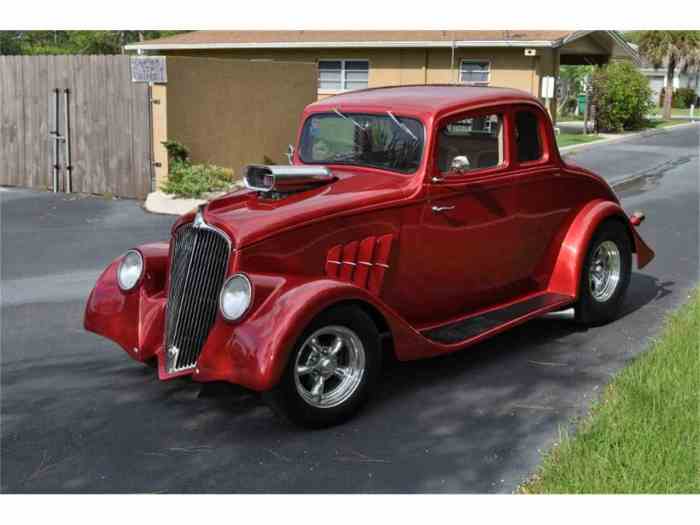
Restoring a 1933 Willys Coupe is a labor of love, demanding meticulous attention to detail and a deep understanding of the car’s history. It involves sourcing parts, addressing common restoration challenges, and ensuring the car maintains its original character.
Sourcing Parts, 1933 Willys Coupe
Finding the right parts is crucial for a successful restoration. While some parts are readily available, others require specialized suppliers or even custom fabrication.
- Original Parts:Look for original parts from reputable suppliers specializing in vintage Willys vehicles. These parts are often more expensive but guarantee authenticity and fit. Popular sources include online auctions, specialized car parts stores, and vintage car clubs.
- Reproduction Parts:Reproduction parts offer a cost-effective alternative, but quality can vary. Ensure the manufacturer has a good reputation for accurate replicas and high-quality materials.
- Custom Fabrication:Some parts may require custom fabrication, especially for damaged or rare components. Skilled metalworkers and fabricators can recreate these parts to original specifications.
Addressing Common Restoration Challenges
Restoring a 1933 Willys Coupe presents specific challenges, including:
- Rust:Due to the car’s age, rust is a common problem. Extensive rust removal and repair may be necessary, requiring specialized skills and techniques.
- Engine and Transmission:Finding a complete and functional engine and transmission can be challenging. Rebuilding or sourcing a replacement may be required.
- Interior:Original interior components, such as upholstery, carpets, and dashboard, are often difficult to find in good condition. Replacement materials must match the original design and materials.
- Electrical System:The electrical system may require significant rewiring or replacement due to age and wear. Specialized knowledge of vintage wiring systems is essential.
Value of a Restored 1933 Willys Coupe
A well-restored 1933 Willys Coupe is a valuable collector car. Its rarity, historical significance, and timeless design make it highly sought after by enthusiasts. The value of a restored car depends on several factors, including:
- Condition:A meticulously restored car with original parts and documentation commands a higher price than one with aftermarket components or incomplete restoration.
- Rarity:Certain models or variations are rarer than others, influencing their value.
- Market Demand:The popularity of classic cars fluctuates, impacting their value. Well-maintained and restored examples are always in demand.
Visual Representation of a Restored 1933 Willys Coupe
Imagine a 1933 Willys Coupe gleaming in a deep, rich shade of maroon. The body lines are smooth and elegant, with the iconic rounded grille and teardrop headlights adding a touch of classic charm. The chrome trim sparkles, reflecting the sunlight.
The interior is a symphony of tan leather and polished wood, offering a comfortable and luxurious ride. The engine purrs with a smooth, powerful rhythm, reflecting the car’s historical significance and timeless appeal.
Final Conclusion
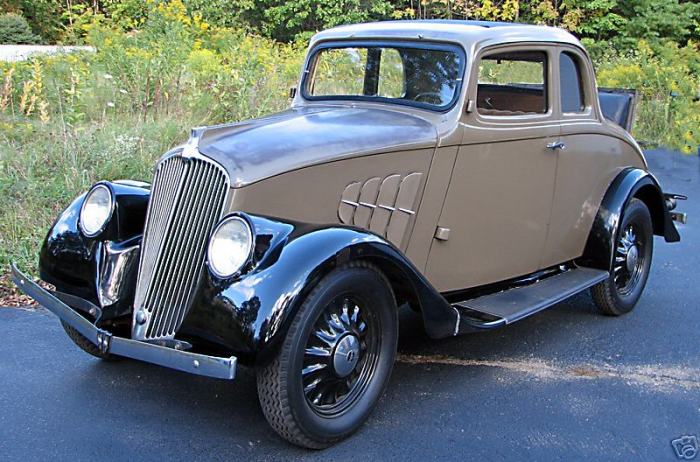
The 1933 Willys Coupe remains a cherished icon of automotive history, a reminder of a time when American ingenuity and design were at the forefront of the industry. Its enduring appeal lies not only in its classic aesthetics but also in its historical significance as a symbol of the American Dream and the transformative power of the automobile.
Whether admired in museums or lovingly restored by enthusiasts, the 1933 Willys Coupe continues to captivate and inspire generations.